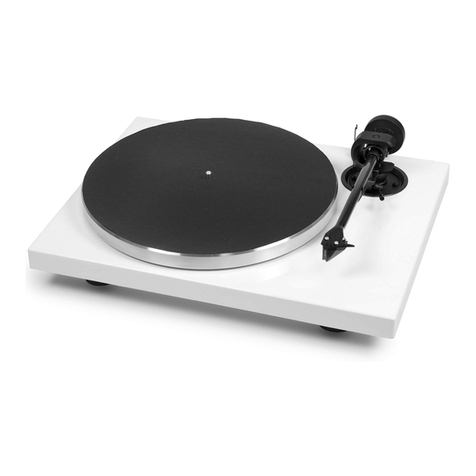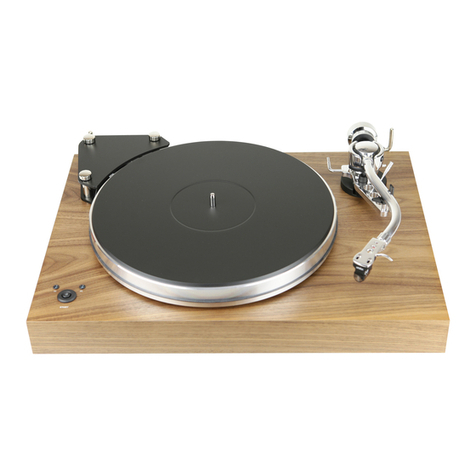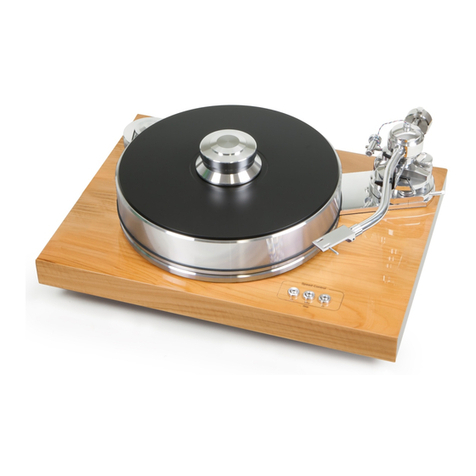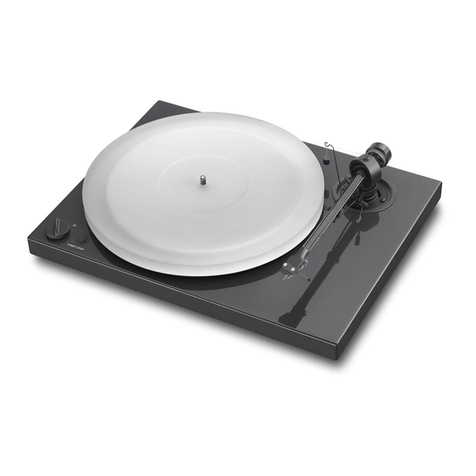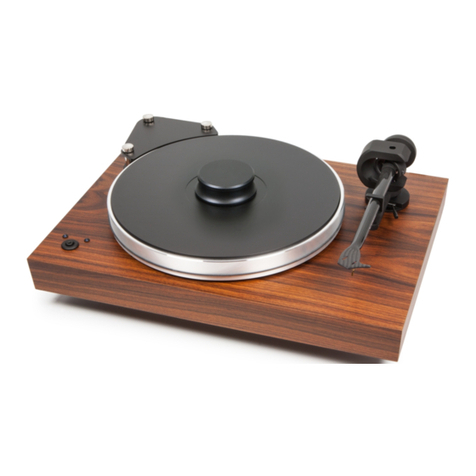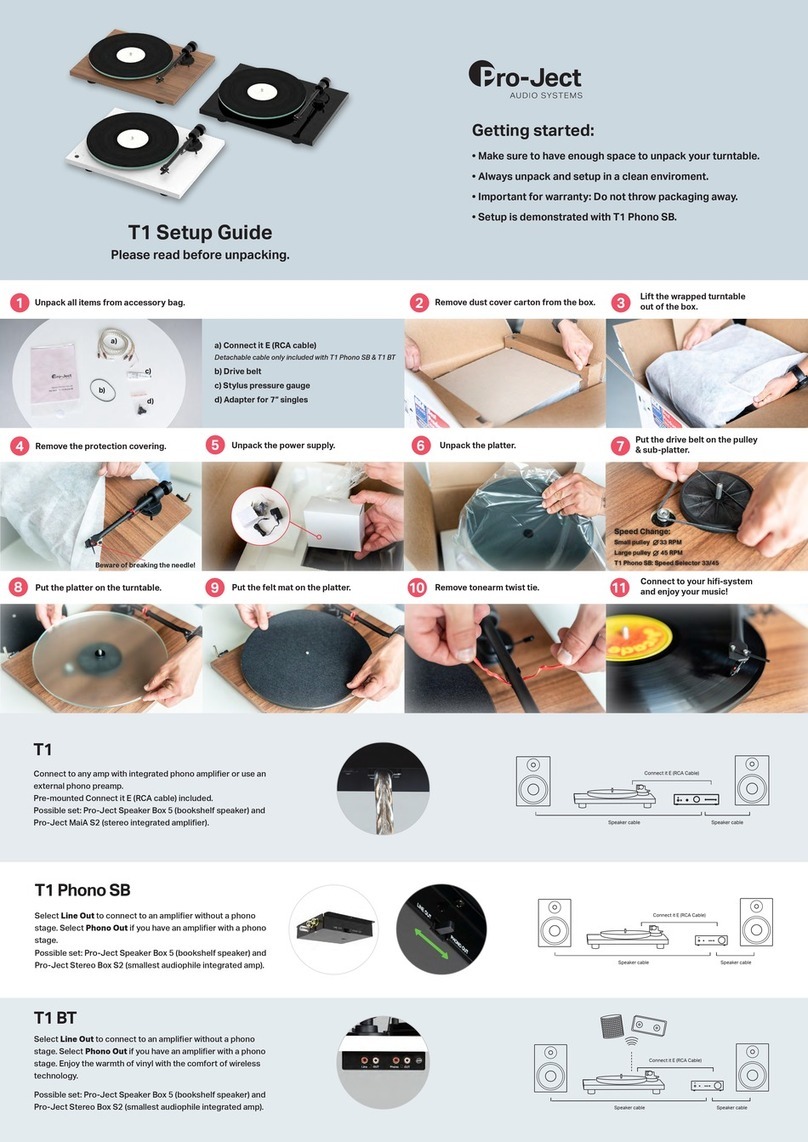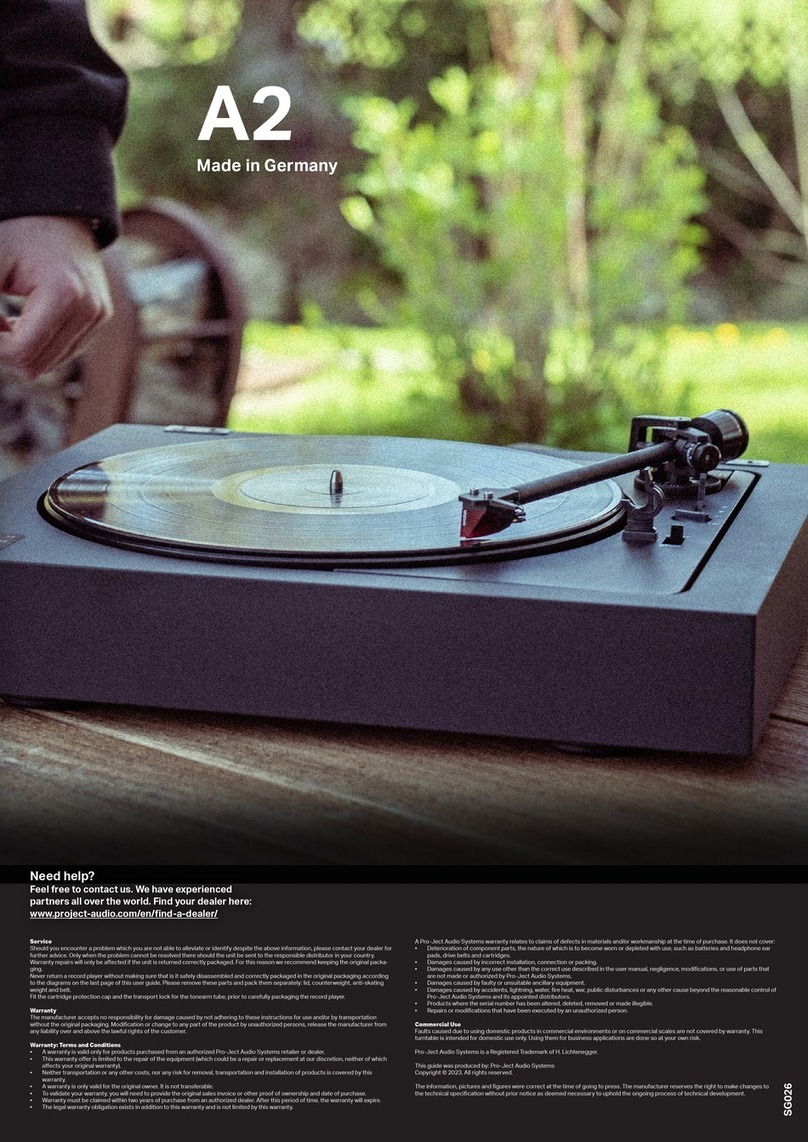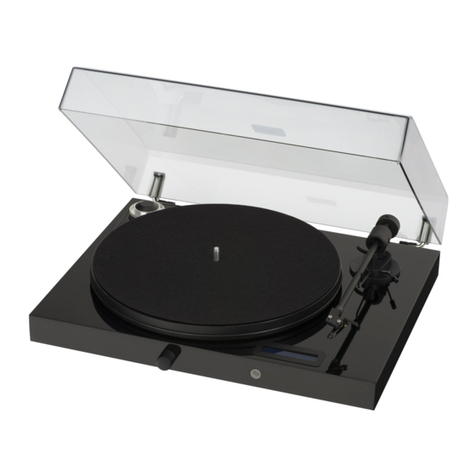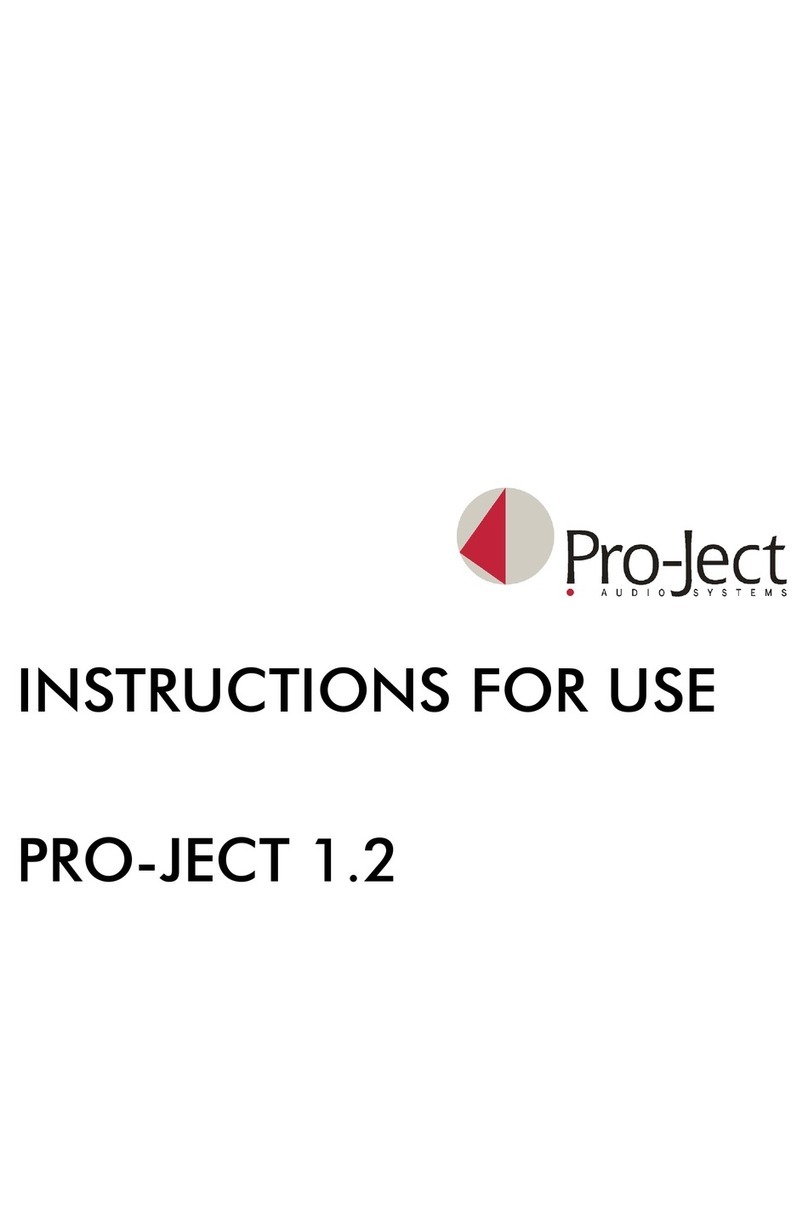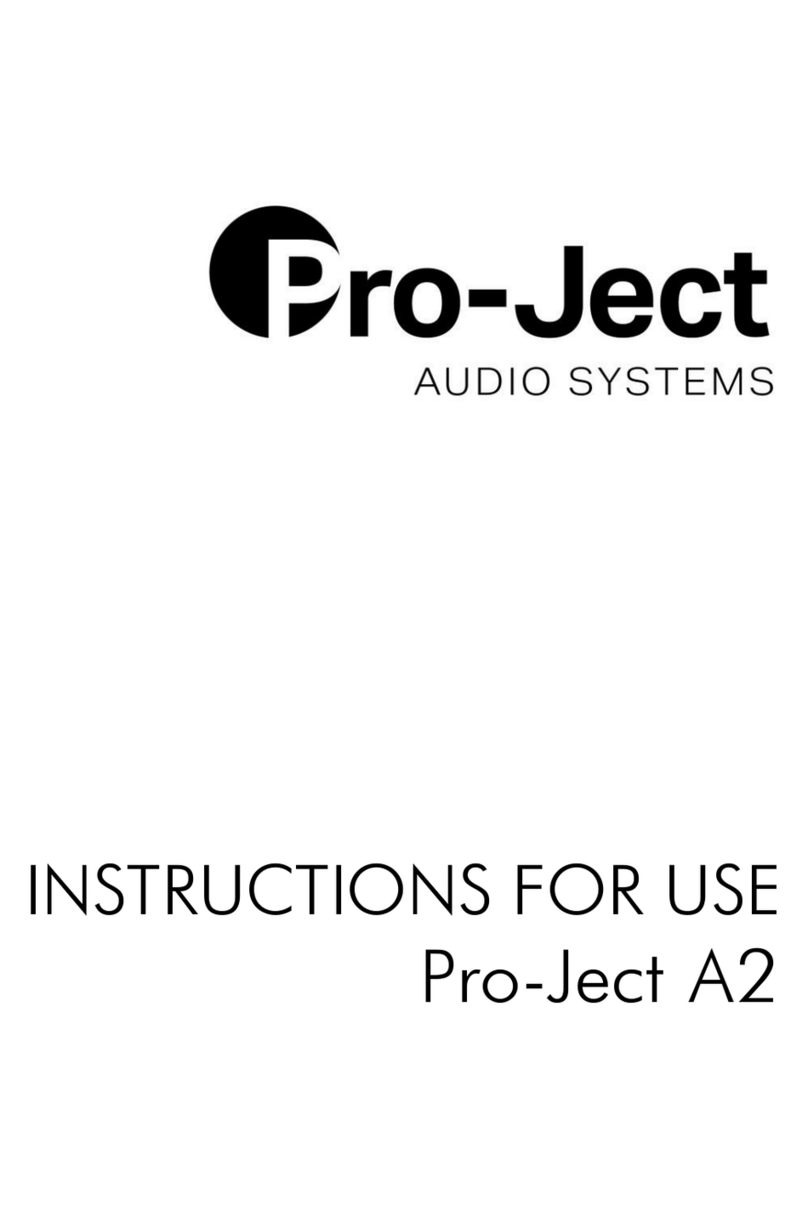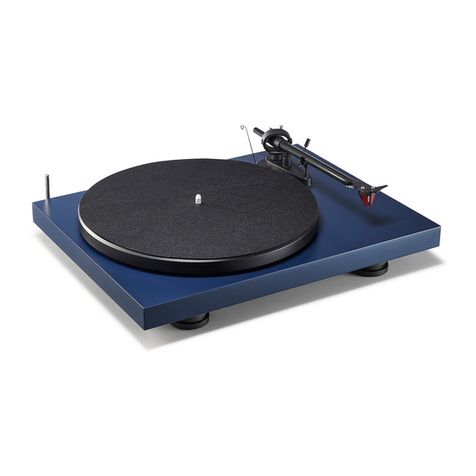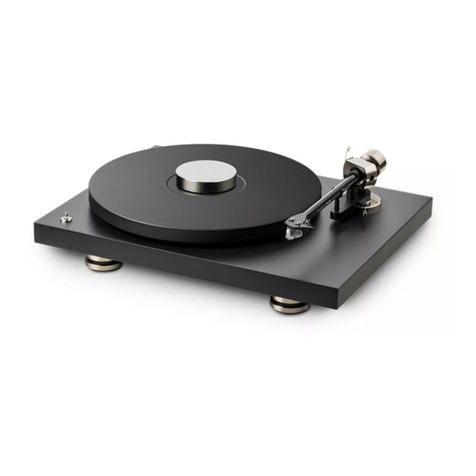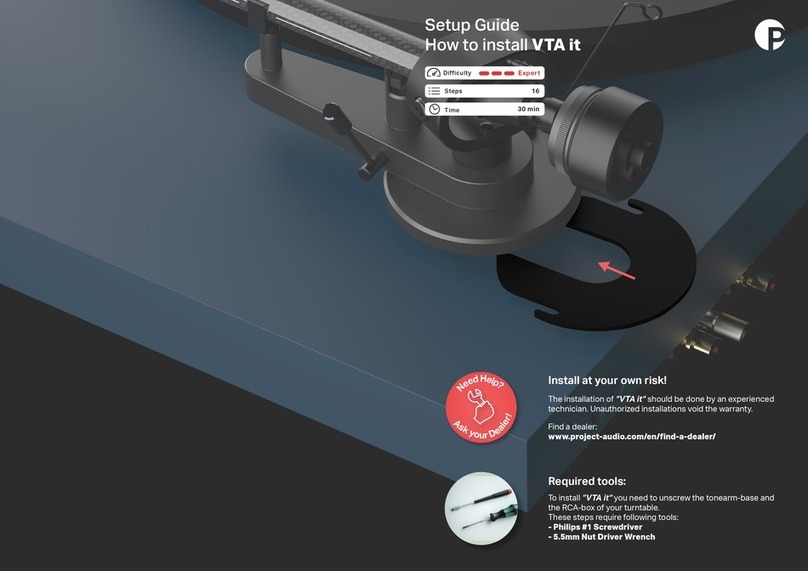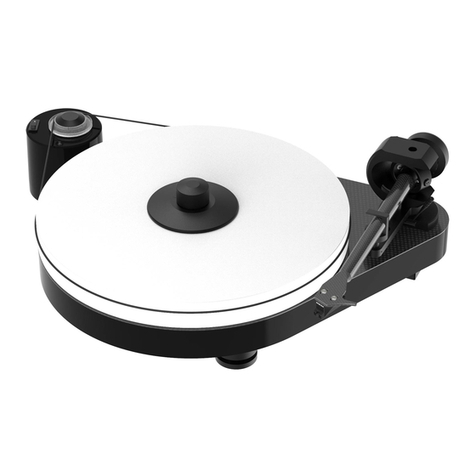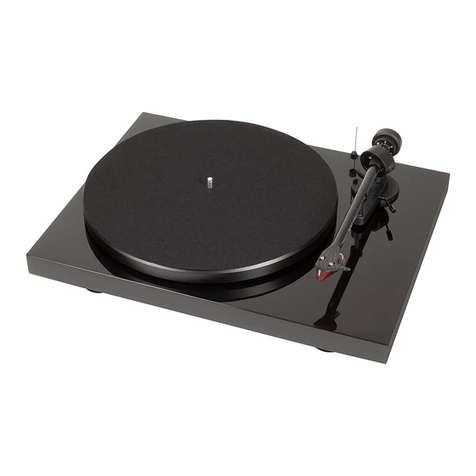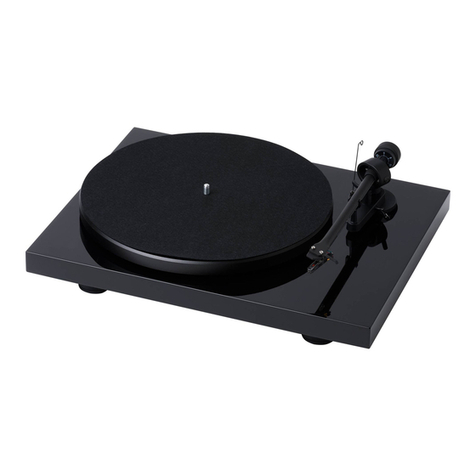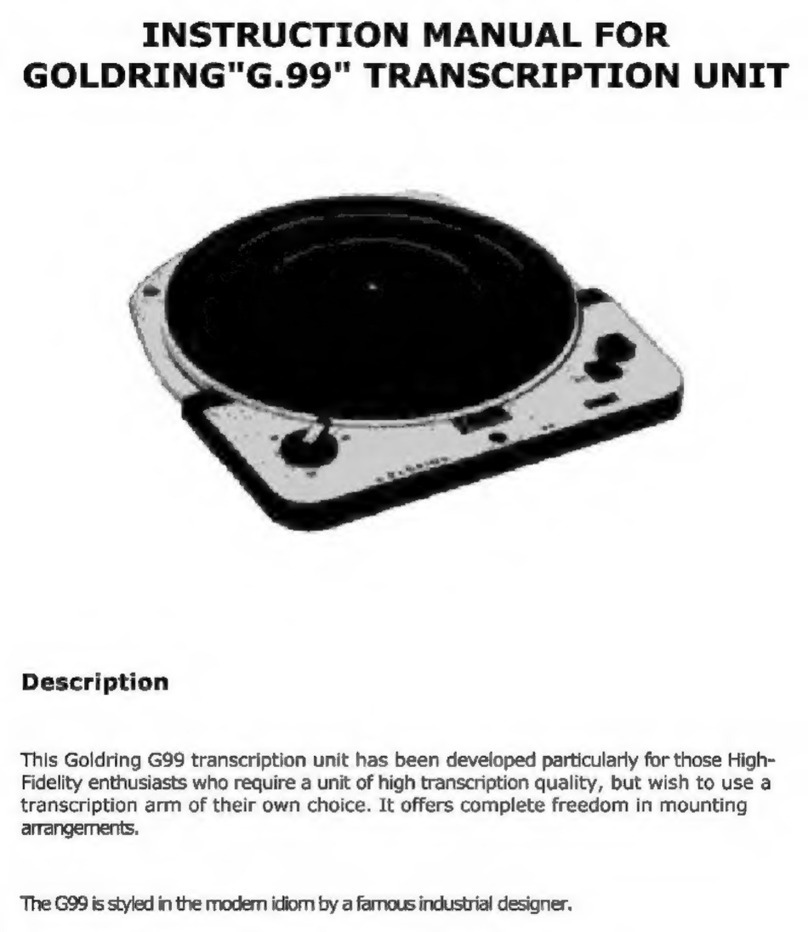
Cartridge downforce adjustment
The counterweight (4) supplied
is
suitable
for
cartridges weighing between 5 -
9g
(counterweight no. 83).
Adjust the downforce
prior
to
setting the anti-skating force.
Place counterweight (4) halfway
along
the counterweight support rod at rear
of
arm, being sure to have the
securing screw uppermost.
With the power off,
and
the platter static, place the stylus pressure
gouge
onto the plotter. To set the
recommended
18mN
downforce
(1
mN
=
0,1 g
I
0,1 Pond), place the tip
of
the stylus exactly in-between the
two points marked
15mN
and
20mN.
If the stylus
gauge
becomes level, then the correct pressure has been achieved. However
if
the there
is
insufficient
or
excessive pressure the
gauge
will either
not
move
or
tilt down.
To adjust the
amount
of
pressure, carefully move the counterweight (4)
along
the support rod, until the stylus
pressure
is
sufficient
to
raise the pressure gauge to the level position.
Moving
the counterweight
(4)
away
from the cartridge will reduce pressure
and
towards will increase pressure.
Finally secure the counterweight
(4)
using hexagonal key provided.
Please
note:
It
is
advised
to
remove sty/us
tip
from
gouge whilst making adjustments
to
ovoid damage
to
stylus.
Adjusting the vertical tracking angle (vta)
**
Put
a record
on
the plotter. When the needle
is
lowered into the record groove and the tonearm
is
not resting
on the lift arm, the tube
of
the tonearm should be parallel
to
the surface
of
the record.
If this
is
not the case, loosen both screws in the tonearm base just enough to
allow
vertical movement
of
the
arm
pillar
without force
and
slide the
arm
up
or
down until it
is
parallel.
Carefully retighten the screws without applying excessive force (which
would
deform the
arm
pillar) -finger
tight
is
quite sufficient.
Adjusting the azimuth
••
The cartridge needle should be vertical when entering the record groove in
order
to
trace the groove wall modulations correctly.
A small screw
at
the
bear
ing end
of
the
arm
allows incorrect azimuth
to
be corrected
if
your needle
is
not mounted exactly perpendicular
to
the cartridge
body
(wh
ich
sometimes can be the case).
Release the screw just enough
to
be
able
to
revolve the
arm
tube without applying
force. Please note:
do
not
remove the screw completely!
::>C
f~~~~~
/
}
..
~
-._,
\~
t '
-
~
'
'
;"
''
...
),,
~.
\•
t~"
~
",\
\
II
'e"
~
~
"'r"
.•
-di
"~
~-\
\
'
~>
'
\
\\
\ '/ A2imuth
\\
·\ \ setting
/
;;:i~
-
~
screw
With the aid
of
a
good
magnifying glass adjust the
arm
tube
until the needle
is
vertical in the groove
(i
.e.
perpendicular
to
the record's surface). Ideally this should correspond to the
top
surface
of
the cartridge body
being parallel
to
the record surface.
When you are satisfied with the position
of
the needle retighten the screw carefully.
Under
no
circumstances
should the
arm
tube be
adjusted
with
the
needle
still
in
the record groove!
Irreparable
damage
may
be
caused
to
the
cantilever suspension!
The
arm
must be lifted
to
make
each adjustment and lowered afterwords
to
check
it.
Anti-skating force adjustment
The anti-skating force must be adjusted corresponding
to
the downforce.
The anti-skating mechanism
is
calibrated from 0
to
Sg. The anti-skating force should
correspond with the downforce.
Three examples
of
magnetic anti-skating mechanism:
a)
Downforce -
1,5g;
Anti-skating force 1,Sg
b)
Downforce - 1
,7g;
Anti-skating force
1,7g
c)
Downforce -
2,3g;
Anti-skating force
2,3g
©
Pro
-
Ject
Audio
Sy
ste
ms
·
Pro
-Je
ct
RPM
3
Ca
rb
on
I
Ortofon 2M
SILVER·
Revision
2015.07.15
5
